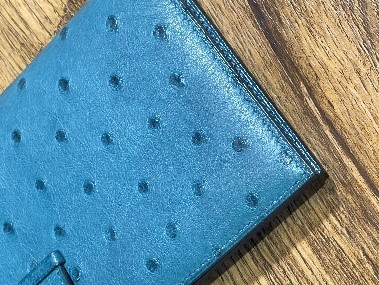Care of rare leathers
Care of rare leathers
1.Snake skin, lizard skin


Accumulation of dirt is common between the scales of snake and lizard skins. Humid conditions also cause developing of mold on leather. Therefore, frequent wiping is required.
Scales on the surface of this type of leather are relatively fragile, so care should be taken when wiping and ensuring the correct direction of which to wipe. Dust and the environment will cause this type of leather to dry out, causing the cuticle to lift from the edges.
Binly’s top leather care series can be used for maintenance. Products certified by SGS do not harm the leather and the human body. They preserve the surface moisture of this type of leather, maintain its toughness, and restore its luster and elasticity.
However, it is only recommended for use on overly dry snake skin and occasional moderate maintenance.
Do not use leather oil, as it is non-volatile and will cause the pores of the leather to become clogged, making the leather surface sticky over time!
2.crocodile skin

Rare crocodile skin is expensive. Real crocodile skin has fine pores, so it will absorb water, leaving a dark watermark. However, the color will return to its original state after drying. Faux leather, on the other hand, will not absorb water or change color.
Do not use chemical solvents, alcohol, or ordinary leather maintenance solutions to wipe this type of leather, as they will destroy the protein structure of the leather, causing fading, hardening, and loss of luster.
Binly’s top leather care series can be used for maintenance. These products are certified by SGS and do not harm the leather or the human body. They preserve the surface moisture of this type of leather, maintain its toughness, and restore its luster and elasticity.
Painting is generally divided into two types: matte and gloss. The water-dyed effect without coating directly expresses the real texture of crocodile skin, and its luster will become more natural over time.
However, due to the special nature of the fabric, it is highly water-absorbent. When cleaning, use a damp cloth that is wrung out until nearly dry for wiping.
3.Ostrich skin

Because the ostrich leather contains a natural oil, it will not harden or crack in cold climates, and is softer than crocodile leather. Its tensile strength is 3-5 times that of cowhide, and it has the advantage of being crack-free and resistant to rubbing.
However, this type of leather is extremely sensitive to sunlight and strong heat sources, which may cause discoloration or deformation. Ostrich leather is super absorbent, so the color will darken when exposed to water, leaving a dark water mark, but the color will return to the original after drying.
For daily maintenance, you can use binly’s top leather care series. Products certified by SGS do not harm the leather and the human body. They preserve the surface moisture of this type of leather, maintain its toughness, and restore its luster and elasticity.
P.S. Rare leather products should be stored in a cool, normal temperature, non-humid, and relatively dry place that is not affected by external forces. Since the production process of each type of leather is different, please test it in an inconspicuous place before cleaning and maintenance, and then evaluate the use.



